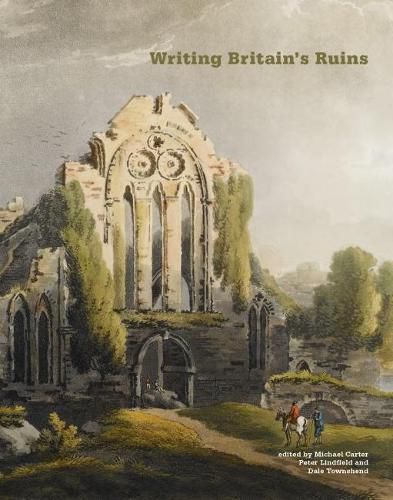Readings Newsletter
Become a Readings Member to make your shopping experience even easier.
Sign in or sign up for free!
You’re not far away from qualifying for FREE standard shipping within Australia
You’ve qualified for FREE standard shipping within Australia
The cart is loading…






Over the course of the long eighteenth century (1700-1850), Britain’s ruined medieval or ‘Gothic’ abbeys, castles and towers became the objects of intense cultural interest. Turning their attention away from Classical to local and national sites of architectural ruin, antiquaries and topographers began to scrutinise and sketch, record and describe the material remains of the British past, an expression of interest in domestic antiquity that was shared by many contemporary painters, poets, writers, politicians and tourists. This new illustrated book traces the ways in which a selection of English, Scottish, Welsh and Irish ruins served as the objects of continuous cultural reflection between 1700 and 1850, drawing together essays on the antiquarian, poetic, visual, oral, fictional, dramatic, political, legal and touristic responses that they engendered. Thoroughly interdisciplinary in its approach, Writing Britain’s Ruins provides an accessible and engaging account of the ways in which Britain’s ruins inspired writers, artists and thinkers during a period of extraordinary cultural richness.
$9.00 standard shipping within Australia
FREE standard shipping within Australia for orders over $100.00
Express & International shipping calculated at checkout
Over the course of the long eighteenth century (1700-1850), Britain’s ruined medieval or ‘Gothic’ abbeys, castles and towers became the objects of intense cultural interest. Turning their attention away from Classical to local and national sites of architectural ruin, antiquaries and topographers began to scrutinise and sketch, record and describe the material remains of the British past, an expression of interest in domestic antiquity that was shared by many contemporary painters, poets, writers, politicians and tourists. This new illustrated book traces the ways in which a selection of English, Scottish, Welsh and Irish ruins served as the objects of continuous cultural reflection between 1700 and 1850, drawing together essays on the antiquarian, poetic, visual, oral, fictional, dramatic, political, legal and touristic responses that they engendered. Thoroughly interdisciplinary in its approach, Writing Britain’s Ruins provides an accessible and engaging account of the ways in which Britain’s ruins inspired writers, artists and thinkers during a period of extraordinary cultural richness.